Nothing, a London-based tech company, is known for their unique Nothing Phone and various ear bud products. KEF, also UK-based, is a company with 60 years in the audio business, producing speakers and various other audio products. Together, Nothing and KEF have partnered up to create Nothing’s very first over-ear headphone, the Nothing Headphone (1). These wireless headphones offer real-time adaptive ANC, a max 80-hour battery life, six microphones, and a sound profile crafted by KEF. With these features and more, this Nothing and KEF collaboration look to take over-ear audio to the next level.
So, let’s dive into the Nothing Headphone (1) to see the kind of performance and features you can get for $299.
Nothing Headphone (1) Specs
| Drivers | 40 mm dynamic / 16 Ω |
| Frequency Range | 20 – 40,000 Hz |
| Bluetooth Version | 5.3 |
| Bluetooth Range | 10 m |
| Battery | 1040 mAh Up to 80 h with ANC off Up to 35 h with ANC on |
| IP Rating | IP52 water and dust resistant |
| Codecs | AAC, SBC, LDAC |
| Dimensions (H x W x D) | Headphones: 173.85 x 78 x 189.25 mm Case: 220 x 52 x 220 mm |
| Weight | Headphones: 329 g Case: 264 g |
Specs taken from product page.
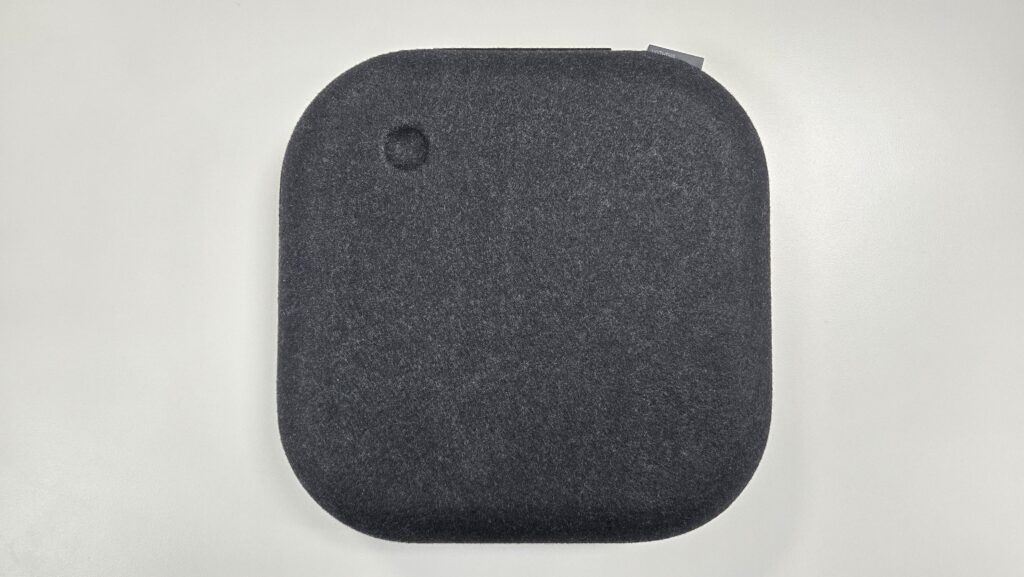
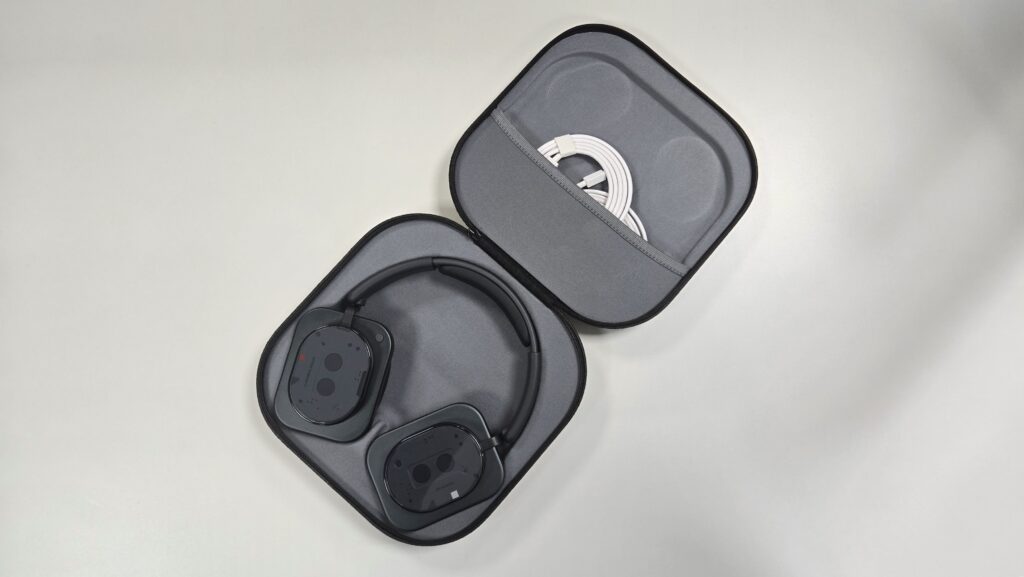
A purchase of the Nothing Headphone (1) comes with a USB-C cable, a 3.5mm audio cable, and a soft shell carrying case.
Build, Features and Comfort
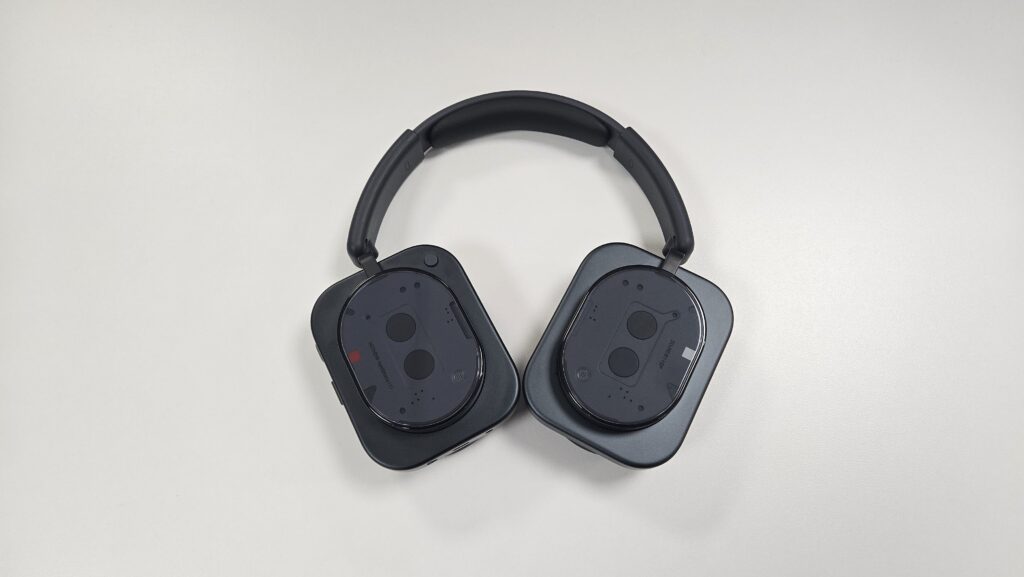
The Nothing Headphone (1) uses custom 40mm dynamic drivers fine-tuned by KEF for each of the headphones’ various listening modes. PU surround materials allow for deep and rich tones in low frequencies while minimizing distortion. Nickel-plated coating finishes on the speaker’s diaphragm minimizes distortion even further as it clearly presents the various sound ranges. Then its uniform dome texture allows for a clean output even at high volumes.
Staying true to the Nothing design DNA, the Nothing Headphone (1) utilizes transparent casing around its ear cups. Its frame features a blend of formed aluminum and molded plastics, while using PU leather for the headband and ear cushions. This design allows the headset to minimize wearing pressure while focusing on comfort for all head shapes. Keeping durability in mind, the headset sports an IP52 rating of water and dust resistance.
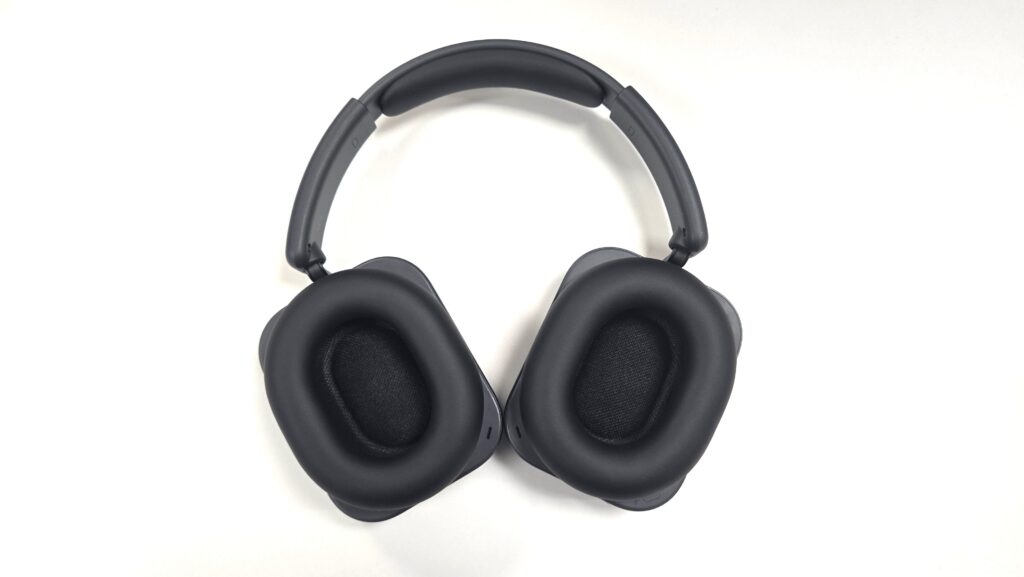
Another unique physical feature of the Nothing Headphone (1) is its tactile controls, all stationed on the right ear cup. Near the top rear of the ear cup, you have a grippable roller. Rolling left and right adjusts the volume, a short press pauses and plays media, and a long press toggles between Active Noise Cancelation (ANC) and Transparency modes. Next to that you have a paddle, where short left and right presses move you through your tracks and long presses allow you to scrub through your content.
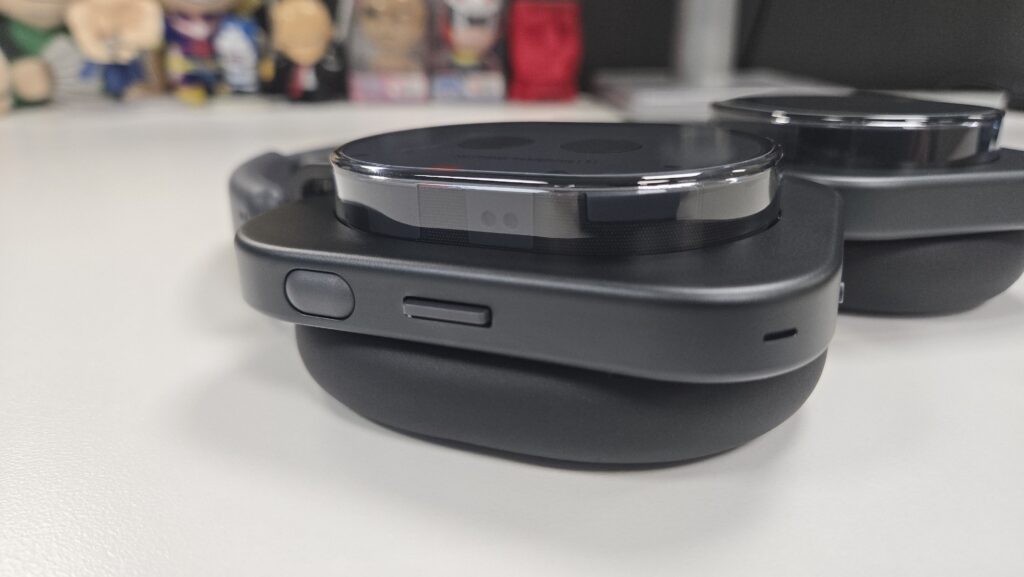
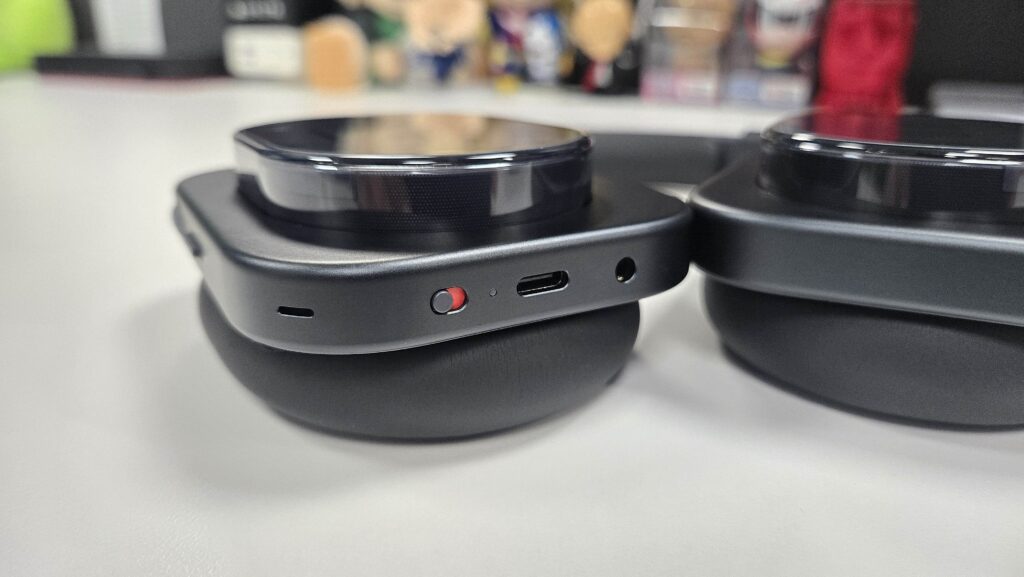
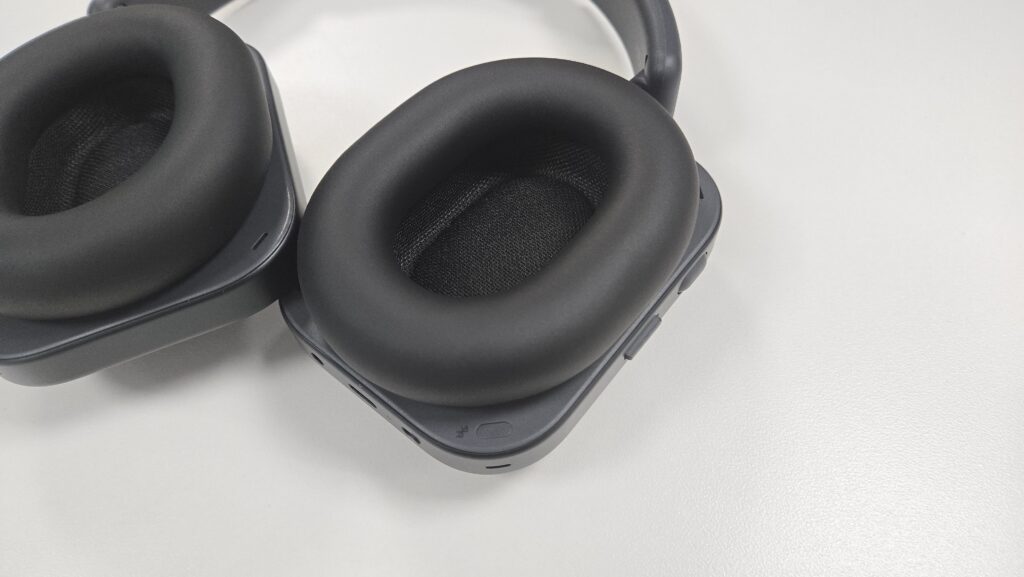
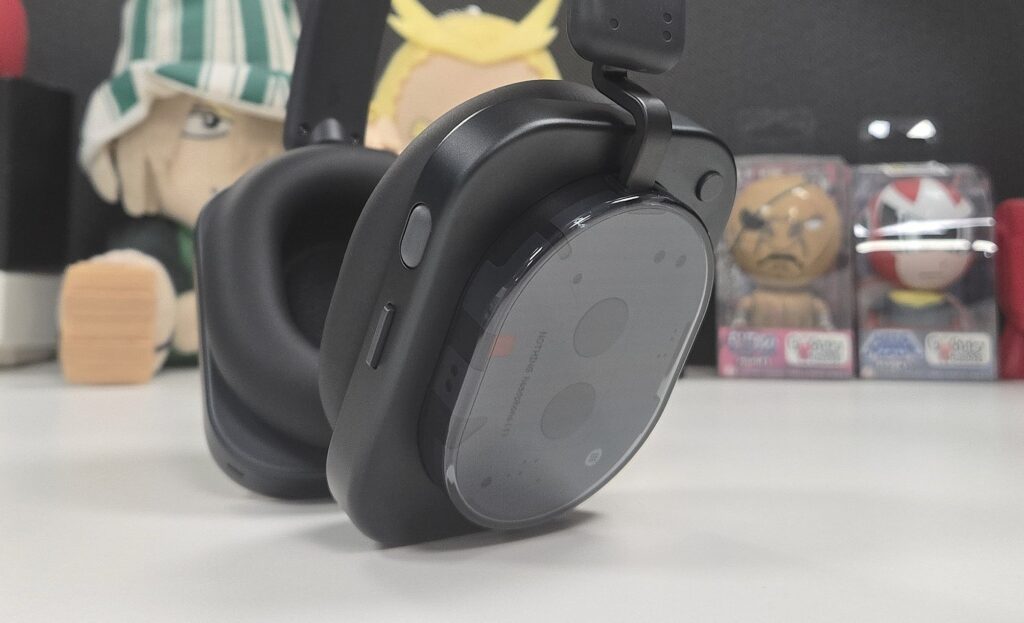
On the side of this ear cup, you have a button that defaults to triggering your device’s voice assistant. While on the bottom you have the headset’s main power switch, a USB-C charging port, and a 3.5mm jack for wired use. Lastly, you have a Bluetooth pairing button near the inner bottom of the ear cup. If you are not a fan of this exact control scheme, you can customize all of the controls except for the Bluetooth pairing button using the Nothing X mobile app.
Not to be overlooked are the Nothing Headphone (1)’s six microphones. Four of the mics isolate your voice during calls while suppressing ambient sounds with Clear Voice Technology. Altogether, these mics drive the headset’s Adaptive ANC experience, providing noise cancellation of up to 42 dB.
Topping off the build is an impressive maximum battery life of 80 hours with ANC off. With ANC on, you can still achieve a very solid max of up to 35 hours. Even with the heaviest battery drainage scenario, ANC on with LDAC playback, the battery life still tops off at a respectable 30 hours. It takes about 2 hours to fully recharge the headphones from full depletion. If you are in a pinch, the headset’s fast charging capability gives you 2.4 hours of use with ANC on from only a five-minute charge.
The Nothing Headphone (1) definitely sports one of the most unique headphone builds that I have experienced to date. Its square-shaped and transparent ear cup casing makes it stand out in a world full of countless wireless headset designs. More importantly to the wearer, it is a headset that is comfortable to wear for hours on end. The headset is lightweight and sports a gentle yet quite secure grip on your head. The PU leather feels comfortable against the skin and does a solid job in passive sound isolation.
Continuing with the Nothing Headphone (1)’s uniqueness, this headset’s tactile controls are a physical feature that I did not know I wanted until now. The default controls are practical, responsive and easy to get accustomed to. When it comes to headset controls, the ones on the Nothing Headphone (1) are easily my favorite of any headset I have used to date.
Toss in a robust battery life and an IP52 rating of water and dust resistance and you have one unique yet impressive build for the Nothing Headphones (1).
More Features and Performance
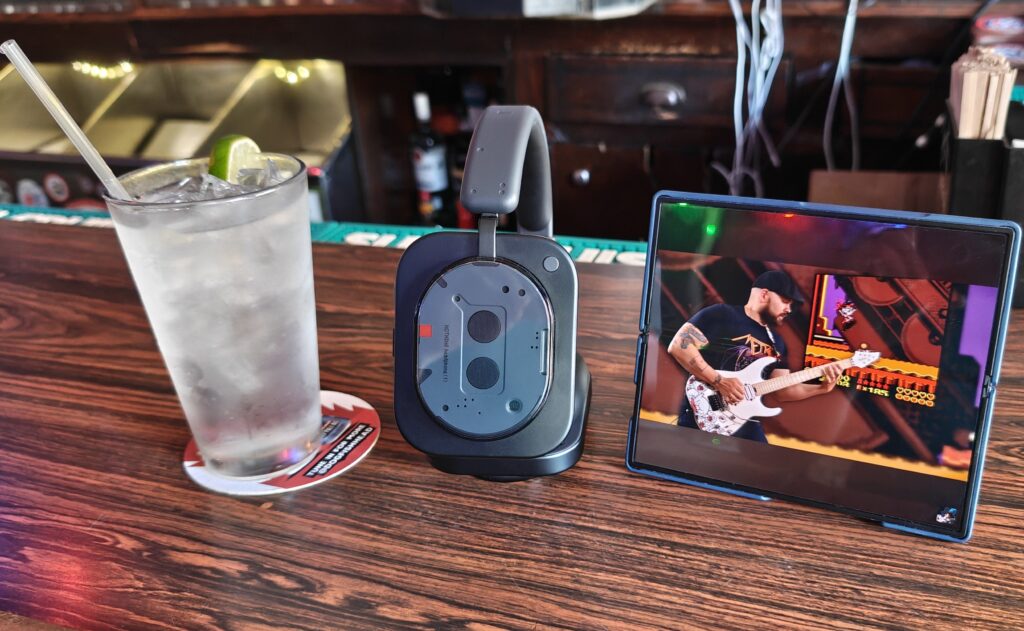
All of the various features of the Nothing Headphone (1) can be fully explored using the free Nothing X mobile app. Through the app, you can toggle listening modes, activate the Spatial Audio and Bass Enhancement features, customize the controls, and access other settings.
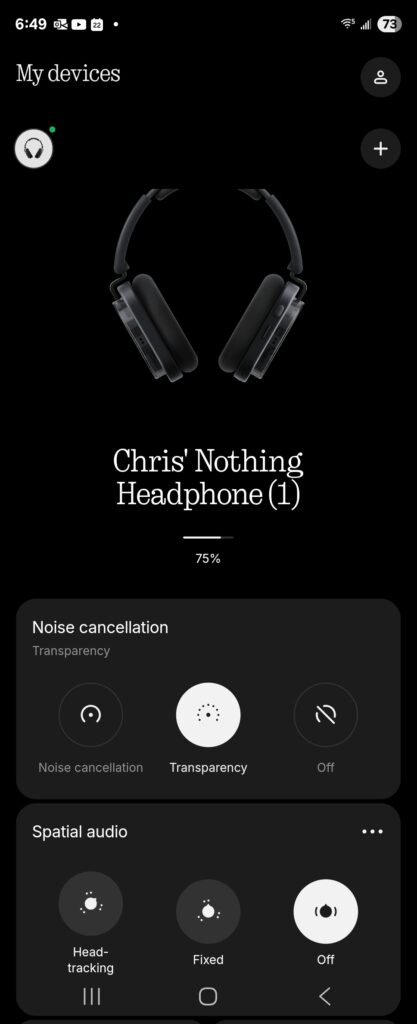
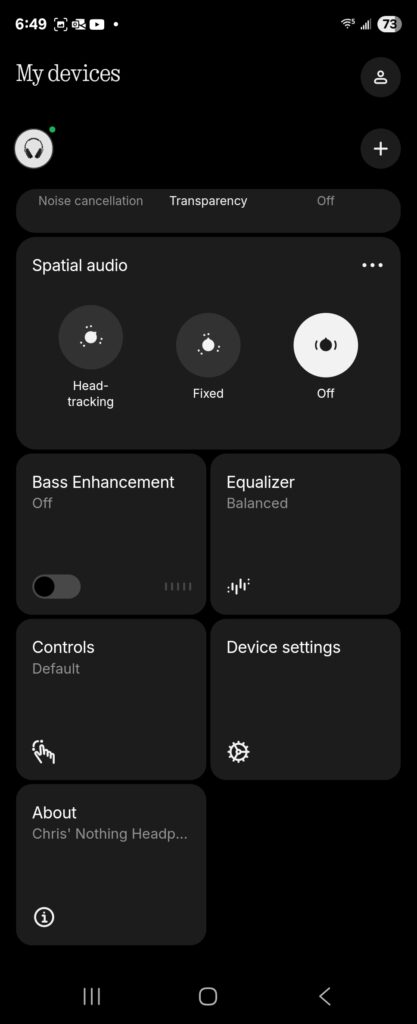

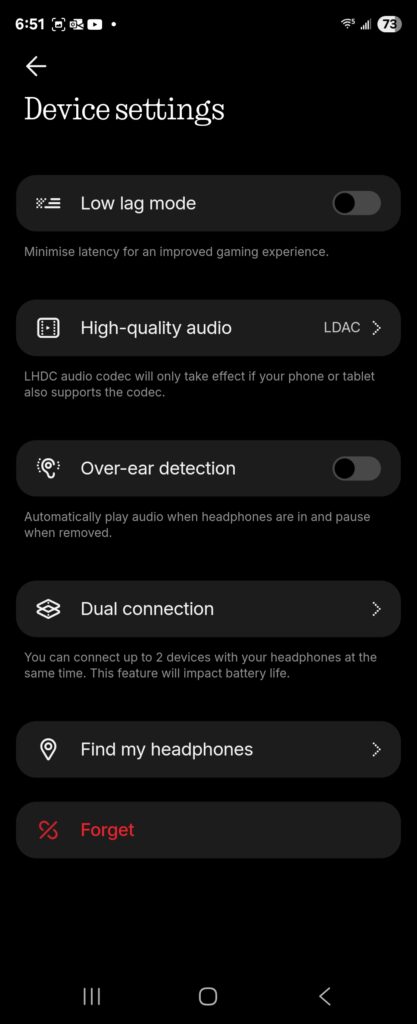
Diving into performance, I did the vast bulk of my listening experience with LDAC on. I wanted to truly experience the Hi-Res Wireless certified sound that the Nothing Headphone (1) was capable of. That said, the KEF-tuned audio on the Nothing Headphone (1) is nothing short of impressive.
Starting with the headset’s default “Balanced” EQ setting, the highs and percussion sounds are sharp and crisp. The lows and bass are warm with a good amount of presence, even before touching the Bass Enhancement feature. Rounding out the presentation are the mids, where instrumentals and vocals are clear, defined and satisfying. This default sound presentation does an excellent job at showing what the Nothing Headphone (1) is capable of right out of the box.
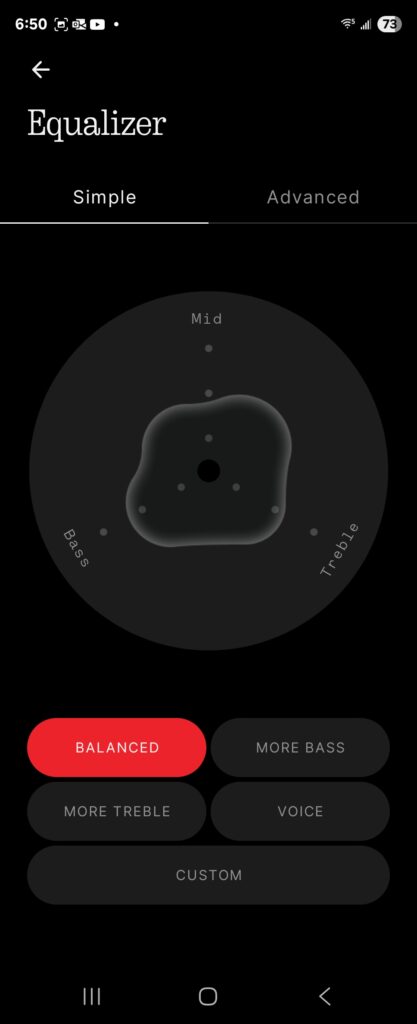
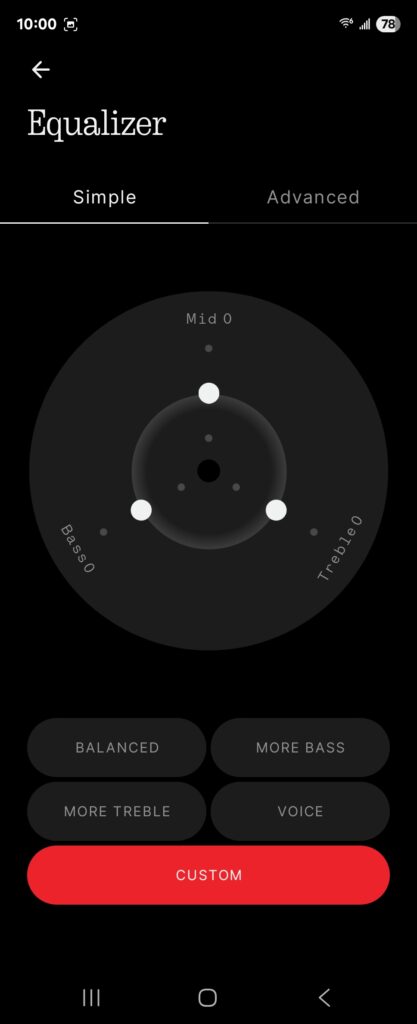
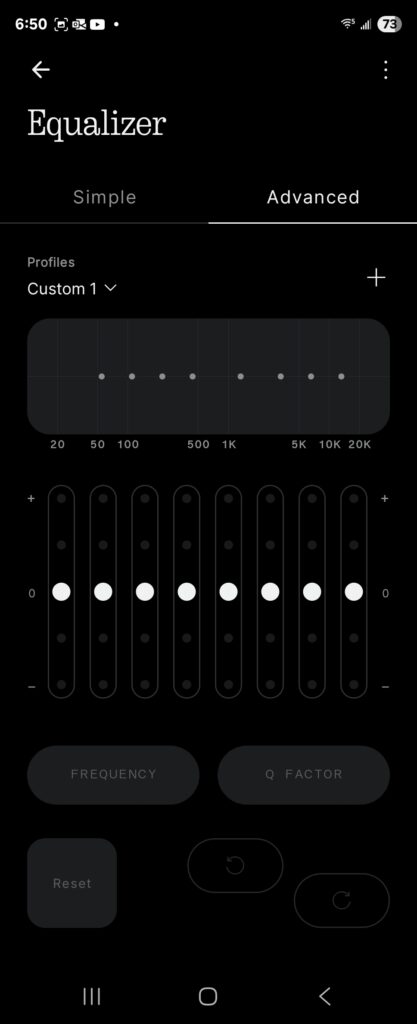
I like how the Nothing X app handles EQ settings with the Nothing Headphone (1). You can either opt to use the Simple or Advanced screen for managing your EQ settings. The Simple screen gives you the four basic choices of Balanced, More Bass, More Treble, and Voice. Even the custom EQ screen gives you a very simple means of managing between low, medium and high sound ranges. However, if you are more of an advanced audiophile, you can use the Advanced screen for a more detailed representation of the various frequencies. It is a nice marriage of interfaces to cover a wide range of users.
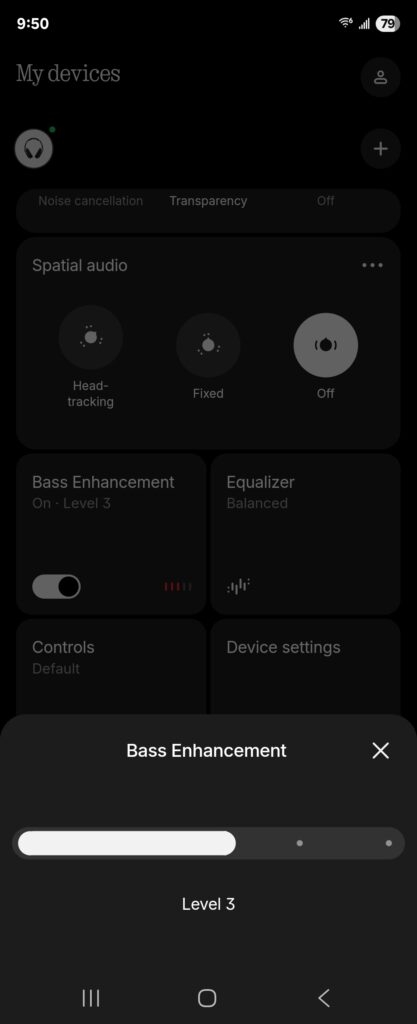
Do you simply want to boost the bass without altering the presentation of the other sound ranges? Then the Bass Enhancement does just that without the trade-off from EQ manipulation. What I like in particular about this feature is that it is not simply just “On” or “Off”. You get five levels of intensity that you can manage to suit your tastes. That said, bass is satisfyingly potent and deep at level 5, as you would expect. However, what makes it a success is that it accomplishes this without any sound distortion.

The ANC on the Nothing Headphones (1) is simply amazing. At its highest setting, I was able to significantly muffle out the music and weekend crowd in a bar as I enjoyed my media. Adaptive ANC was also effective as I walked the city streets, barely able to hear any traffic sounds outside of the particularly loud ones. It is easily the most effective ANC I have experienced in a pair of over ear headphones to date.
I could say the same about the Transparency mode, as I was able to hear my surroundings as if I was not wearing a headset at all. There was no option to alter the intensity of this mode like with ANC, but I did like how effective it was.
Spatial Audio is a feature intended to give you that immersive music hall like experience as you enjoy your media. The bass is noticeably enhanced with this mode active. However, the feature worked better with music than it did with movies or videos. With music, you experience this nice subtle echo as the sound reverberates around the simulated space. It definitely achieves that surround sound feel. With videos or shows, I felt as if I was watching a show on a TV set in a small yet empty room. It did not exactly simulate the experience of watching a movie in a theater like I expected it would.
Lastly, call quality on the Nothing Headphone (1) was superb. I took calls as I walked through busy and noisy streets. My call participants were only barely able to hear my surroundings, despite my efforts to walk through particularly noisy areas. The headset not only suppressed my background sounds to a dull roar, but it also projected my voice with clarity.
In the end, the Nothing Headphone (1) excelled in performance. The KEF-tuned sound presentation was on point. Best of all, whether ANC was on or off, the sound quality remained consistent throughout my various listening scenarios.
Final Thoughts
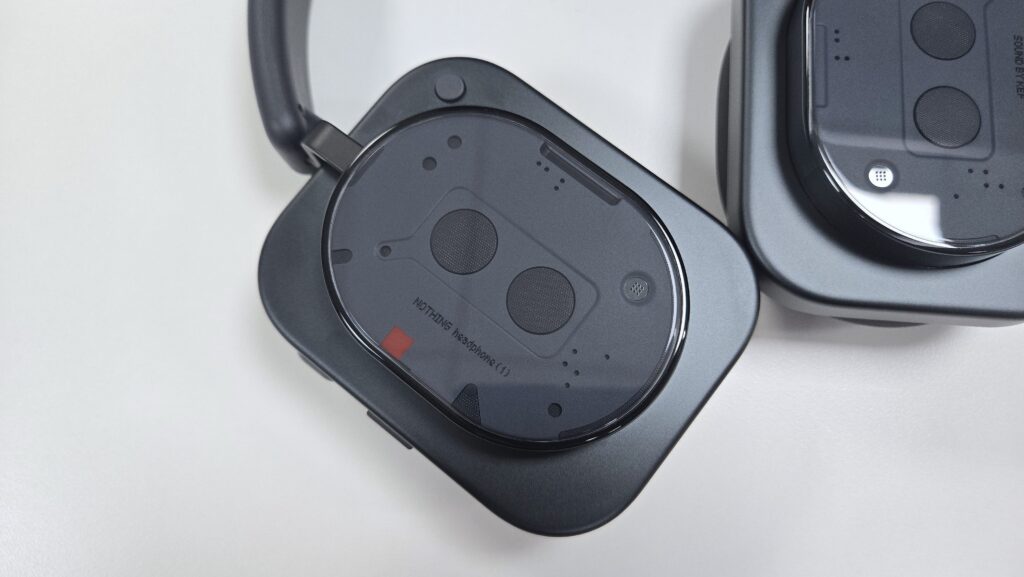
The Nothing Headphone (1) are my over-ears to beat in 2025. You get an impressive sound presentation, equally impressive noise cancellation, and a very solid 35-hour battery life with ANC active. You then toss in a pleasantly comfortable build as well as unique and intuitive controls that give you full control of your listening experience. This is then all brought together by the Nothing X companion app, which lets you fine tune that experience to suit your personal tastes.
If you are interested in checking out the Nothing Headphone (1) for yourself, you can do so by clicking here.
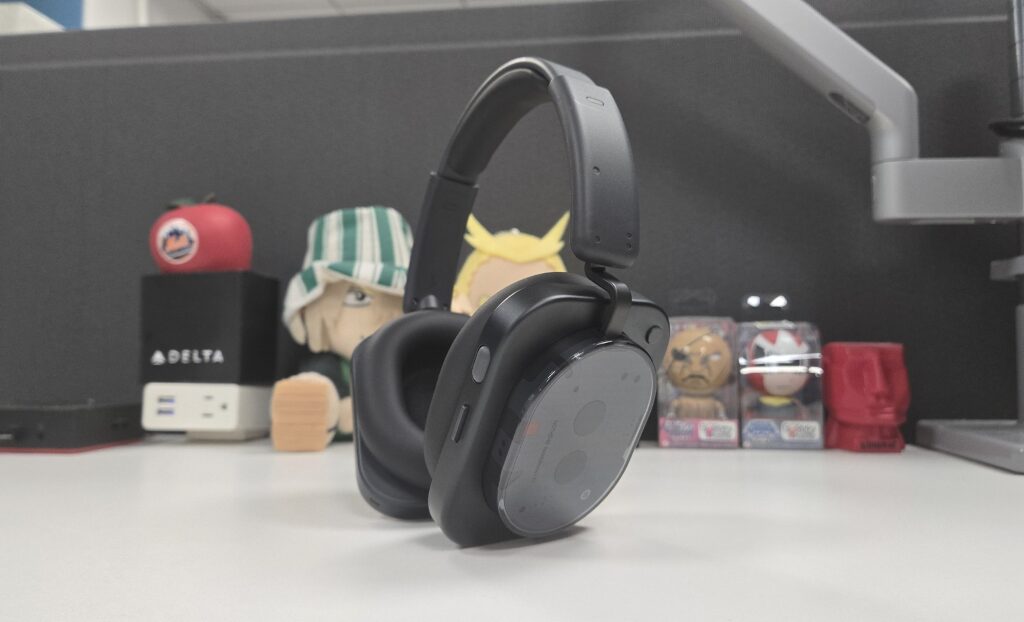
† We were provided with a Nothing Headphone (1) headset for review purposes and were not compensated for this review.




